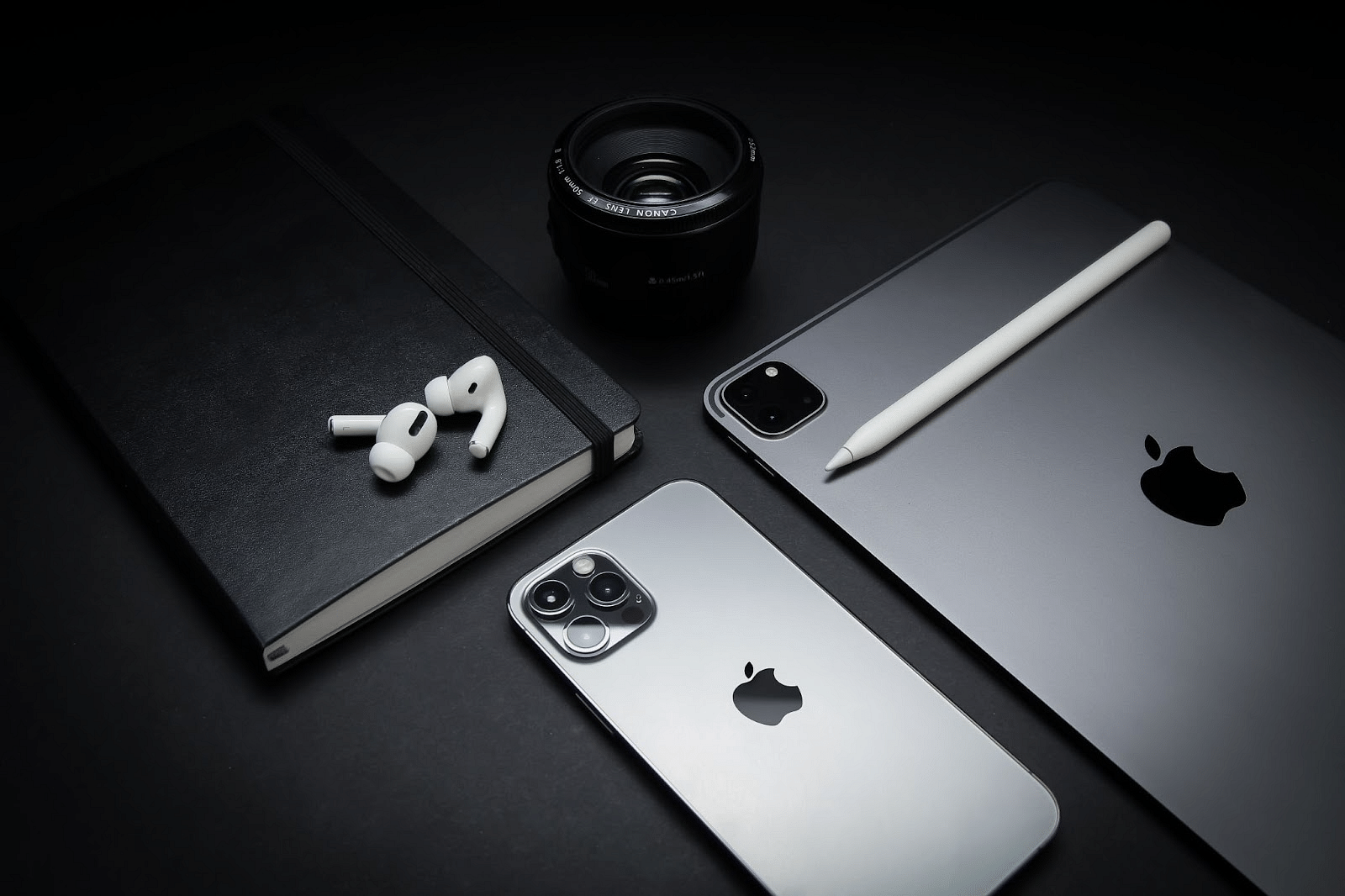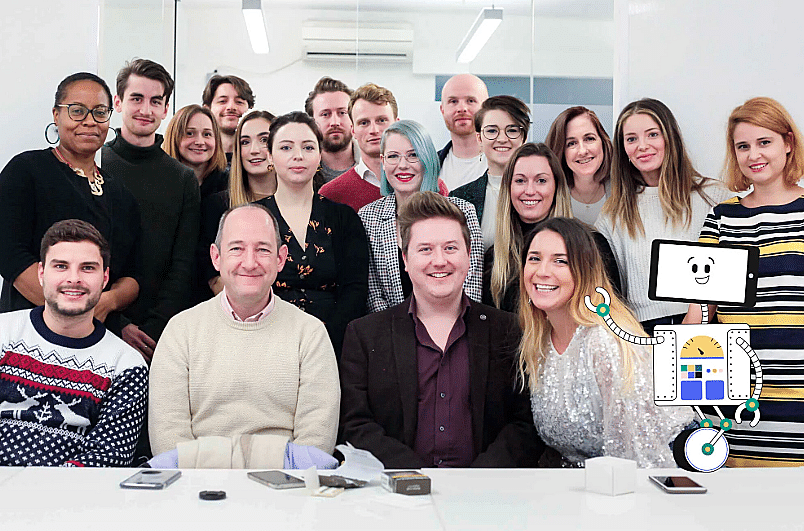
Finding your differentiating factor, creating a ‘Magazine of You,’ and winning customers by talking in their language
By Jim James, Founder EASTWEST PR and Host of The UnNoticed Entrepreneur.
Matthew Stibbe is an author and he’s also the Founder and Chief Executive Officer (CEO) of Articulate Marketing. Before having the marketing consultancy, he also built a big gaming marketing company. In the new episode of The UnNoticed Entrepreneur, he talked about how entrepreneurs can get noticed based on his own experience.
Image from LinkedIn
On Being Different
Getting noticed starts by doing something interesting and different. If you want to be noticed, avoid being a round pebble.
If you’re trying to be inoffensive, not alienate anyone, not say anything controversial or interesting for fear that you might lose a potential customer or irritate somebody — you’re in a bad place.
When Matthew used to write for Wild Magazine, his editor said this advice: If you want to write about everything for everybody, you’re going to be a really lousy writer; you’ll be competing with thousands of wannabe freelance journalists who want to write for that. Pick a thing that you want to write about and be really good at that.
Following that, he thought back then that it would be great to write about business jets. Sure enough, there weren’t a lot of people who review business jets. That writing stint was a nice gig that he had for a while.
How to Position Your Business
Now, Matthew runs Articulate Marketing. And drawing from experience, a perennial problem that he’s seen among big technology companies is that they tend to talk about the technology: We've got this many gigahertz or megapixels. However, this kind of talk tends to be very insular. Businesses are looking at their competitors, making tables of features, and working out how they can differentiate themselves.
The moment you step back from that and you start understanding your audience, validating their needs, attitudes, and beliefs, and talking to them, then you can move towards a position of differentiation like what Steve Jobs achieved for Apple.
Jobs didn’t tell that Apple products have more megabytes than Dell or HP. Instead, he did a campaign called “Think Different,” which featured images of iconic people like Miles Davis. With that, he appealed that he deeply understands his audience, which is mostly comprised of creatives, solopreneurs, and people who had an eye for design. And that customer base was enough for them to sell Apple computers and turn their business around.
When he took over the business, it was practically going to bust. But then, he managed to stand out: While most IT companies are selling cold dead fish, Apple is selling sushi.
Image from Unsplash
One way of positioning your business is to get in touch with your audience and find some emotional hook. In a video by clinical professor Sonia Marciano about enterprises, differentiation, and branding, she cited Subaru as an example of this.
In America, Subaru has a tremendous reputation for safety and people are buying it for various reasons. It shows that they understand their audience, who’s buying their cars, and how safety is important for them. They used safety as their point of differentiation — and the theme around which they can tell a story around. And the story they tell is something that appeals emotionally yet is substantiated with data and evidence.
How Your Tone of Voice Can Help
Going back to Apple, as a brand it has been able to parlay its initial success into technological and product differentiation — lightness, thinness, and processing power among other things. But it’s hard to say to a small business to be more like Apple because they don’t have the experience of running a trillion-dollar company.
If you’re at the early stage of your business where you haven’t got the resources of a multinational company, what you can do is invest in your tone of voice.
Matthew used Virgin Airlines as an example. If you look at airlines, the functioning is basically the same: You get a seat and go from one place to another. There might just be slight differences in the food served or in the choice of videos to be watched.
To help set themselves apart, Virgin has this incredibly cheeky and saucy sort of British seaside humour. And this kind of differentiation in your brand’s tone is something that’s accessible to any business.
You can build a website that has this potentially shiny copy. You don’t have to be cheeky — you can be very serious if the rest of your competitors are rather frivolous. If they have a website that has pictures of skyscrapers, you need a picture of something else. If everyone is zigging, you just need to zag. Find a way to sound and look different.
To do the positioning and the visualisation, you may need to get help from an agency or an expert. However, it need not cost mega bucks.
How to Create a Magazine of You?
Years ago, Matthew watched a standup comedian talking about her craft. He remembered her saying that your obvious is your truth and your obvious is your talent. It’s the thing that you know and is an expert in, whether it’s about installing swimming pools or sorting out information technology (IT) problems.
What you need to do is to think about your obvious — that one thing that you know — and find a way to translate that in a way that will be relevant, useful, and interesting to people who might buy your product. You have to understand your audience and know their needs and pain points. What keeps them awake at night? What are they excited about? What do they think is interesting or not interesting?
Image from Unsplash
Magazine of You is a concept by Matthew that refers to how you communicate all that and how you build a bridge between you and your audience. As a writer, one way he does that is by writing blog posts. You can also do a podcast or Twitter or Instagram stream if you’re into that.
Keep in mind that Magazine of You is for your customers. It’s about them and the things that they’re interested in. You will only be the author of it.
If you can build that Magazine of You, people will come to you because you have something interesting to say. People will subscribe to your blog, podcast, or social media channels. You can do that instead of renting advertising space in other people’s magazines or putting out paid advertisements on Google. With it, you won’t also have to pay anybody for that because you’re the one creating it.
Overcoming Shyness and Lack of Confidence
Magazine of You has an advertising purpose, and that is to advertise you and introduce your thoughts and ideas in the right context — and to the right people.
Creating it could imply that you need to be good and feel confident about what you talk about. But what about entrepreneurs who may be shy or not so confident about the way that they sound or look?
Typically, what hinders people from doing things is the perception that they’re being scrutinised and judged. For instance, Matthew has encountered people who don’t do a webinar because they’re nervous about public speaking. But in reality, they’re actually fluent, expert, and well-informed. It’s just that they fear the risk of saying something stupid or alienating somebody or being revealed that they’re not really an expert.
However, the moment you tell yourself that you’re doing it for your audience, you’re sharing something, and that you’re willing to take a little bit of a risk — then, the stakes can be lowered.
At Articulate Marketing, they help their clients do webinars by conditioning their minds: Consider it like they’re only talking to them, similar to what they did during rehearsals. They can think of it as if they’re talking to a client in a coffee shop or a meeting room. Once they hear this piece of advice, their clients would usually suddenly feel fine.
Image from Unsplash
To overcome shyness and anxiety, it’s also important to find a medium where they can be comfortable and derisked.
Another critical thing is time. And the antidote to time — the pressure of time and the stress of it — is to create a habit. If you blog every day or do a LinkedIn or Twitter post every day and commit to it, it can be a real part of your routine.
Matthew started blogging back in the 2000s. He used to get up early in the morning and the first thing he does is write his blog post for the day. Doing that week in and week out was how his blog became successful for him.
Technology Can Help You Be Different
Prior to Articulate Marketing, Matthew had a gaming company called Intelligent Games.
Back when he was studying at the University of Oxford, he already did a couple of games. When he launched Intelligent Games as a proper business, he hired a games designer named Richard Evans. He would be designing things while Matthew was in charge of writing.
How did he get that business noticed? At that time, the dot matrix printer was the most commonly used printer. It produced black-and-white things that looked rather lousy. He chose to lease Canon’s CLC 10, which was the first inkjet printer you can avail of. That printer also had a scanner on top and coloured ink.
He used the CLC 10 to print game proposals that he would send to publishers. Those proposals featured Evans’s artwork and Matthew’s writing and the layout that he made (he had experience designing a couple of issues of the Oxford University magazine using desktop publishing).
Based on this experience, he emphasised how it’s vital to find a technological solution and adopt it. If you’re an early user of that, it will allow you to be different from everybody else.
This is also similar to when he started out his Bad Language blog (now the Articulate Marketing blog). During those days, blogs were quite uncommon. In that regard, blogging was like the CLC 10 for him.
It’s All About Your Customer — Not You
Entrepreneurs and business owners often have the so-called “person in the mirror” problem. It refers to how one views themselves as someone who’s acquired all this expertise and has become a master of a certain thing (In the case of the clients that Articulate Marketing works with, that thing could be a piece of technology like data manipulation and data engineering).
Image from Unsplash
Their tendency now is to assume that they and their customers share the same way of thinking and have similar interests. They assume that the things that got them to their career are probably the things that motivate their customers as well.
This kind of thinking prompts them to talk about the things that they know in their own language. They prepackage their products and services in their language.
However, in the real world, people have their own things that they got to do and their own problems that they have to solve. They’re also experts in their own businesses or their own parts of the operations of the companies that they work for. In reality, they’re not really spending their time thinking about what you sell and who your competitors are.
For instance, someone who is a manager is contemplating getting an IT support service. Bear in mind that they won’t just be mainly thinking about IT support in their life. So if they’re looking for an IT support provider, they’d choose someone who’s talking about their issues in their language and when they’re ready for it. On your end, if you’re an IT support company, you need to understand that person as a customer and don’t simply talk about yourself.
That way, you can start the conversation, earn their trust, and get into a relationship with the customer. Once they’re ready to hear about your offer, you can then tell them how you can help. But long before you arrive at that kind of conversation showcasing your product or service, you must have their trust and engagement first.
Matthew likened it to his experience when he got back into the dating scene following a divorce about a decade ago. He realised back then that if you go out on a date and simply talk about yourself all evening, the person you’re with will get bored very quickly and will think that you’re not interesting, clever, or worth seeing again. However, if you sit back, ask nice questions, and learn more about them and what’s going on in their world, then they will think that you’re fascinating.
To address that person in the mirror problem, you need to be talking about your audience’s issues in their language. Instead of looking at the mirror, you have to look through the window.
Getting Articulate Marketing Noticed
Matthew has almost 20 years of blogging and that has given him a very attractive search engine optimisation (SEO) and backlink profile. And with that, his business is getting found a lot on Google for queries like, “How do I improve my organic traffic?” or “Should I hire a marketing agency or a marketing person?”
Additionally, he and his team are also working in partnership with clients and vendors, including HubSpot.
Image from Articulate Marketing
When he started Articulate Marketing, he also used to do a lot of live events. Using a meeting room in Central London that Microsoft had lent him, he would host workshops about how to write about your business and how to blog. Some of his company’s earliest customers came from those intimate and simple events. And now that COVID restrictions are evapourating, Matthew is thinking of doing those again.
Apart from these, he also guests on podcasts to help get the word out. He’s also eyeing more LinkedIn engagements by posting quotes and thought leadership pieces. Additionally, he’s also writing for his own blog, www.geekboss.com, as his old one has got integrated with Articulate Marketing. There, his articles are about management, leadership, and a little bit of marketing, aviation, and Lego.
To learn more about Articulate Marketing, visit www.articulatemarketing.com. If you’d like to reach out to Matthew, head over to his online calendar, www.articulatemarketing.com/meet.
This article is based on a transcript from my podcast The UnNoticed Entrepreneur, you can listen here.
Cover image by LinkedIn Sales Solutions on Unsplash







